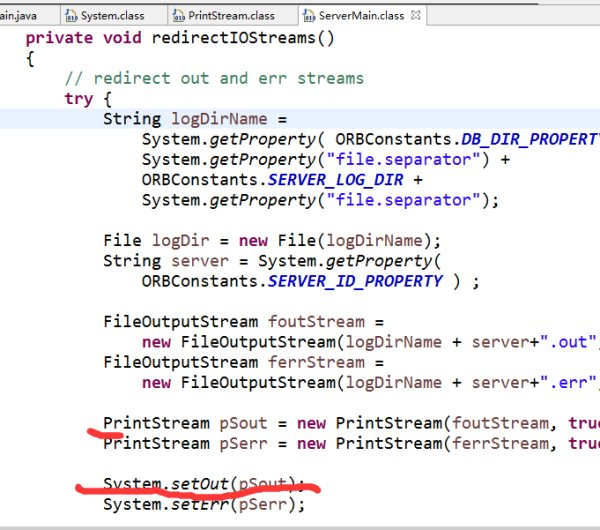源文件中,其中“out“是public static final printstream out = null”
貌似我们学过变量一旦被final修饰,其值不可改变
源码的解释:
final修饰的PrintWriter类引用out无法在Java语言层面改变值,但使用JNI进行系统调用重定向打印流对象。
/*initalizeSystemClass中调用了setIn0、setOut0和setErr0方法,猜想这是在设置System.in、System.out和System.err流对象。setOut0被声明为了一个native(本地)方法,需要用到JNI,因而看不到setOut0方法的实现。*/
private static native void setOut0(PrintStream out);
// 但有一个相似的setOut方法。
/**
* Reassigns the "standard" output stream.
* ...
* @param out the new standard output stream
* ...
*/
public static void setOut(PrintStream out) {
checkIO();
setOut0(out);
}
//注释中指出,通过setOut方法重赋值标准输出流。可以推测,out对象是通过JNI赋的值~



源码部分:
/**
* The following two methods exist because in, out, and err must be
* initialized to null. The compiler, however, cannot be permitted to
* inline access to them, since they are later set to more sensible values
* by initializeSystemClass().
*/
private static InputStream nullInputStream() throws NullPointerException {
if (currentTimeMillis() > 0) {
return null;
}
throw new NullPointerException();
}
private static PrintStream nullPrintStream() throws NullPointerException {
if (currentTimeMillis() > 0) {
return null;
}
throw new NullPointerException();
}
注意这个的注释,这段注释中提到了一个方法 initalizeSystemClass,上面说到的setOut方法就是在这个方法里被被调用的,这个方法的注释:
/**
* Initialize the system class. Called after thread initialization.
*/
System.out这个值其实可以由System.setOut()这个方法来设定的,它其实是个native的方法。Java代码前面加了
final只是让用户无法赋值而已。